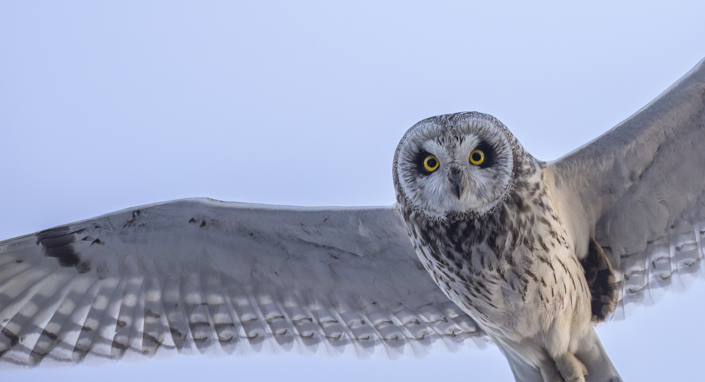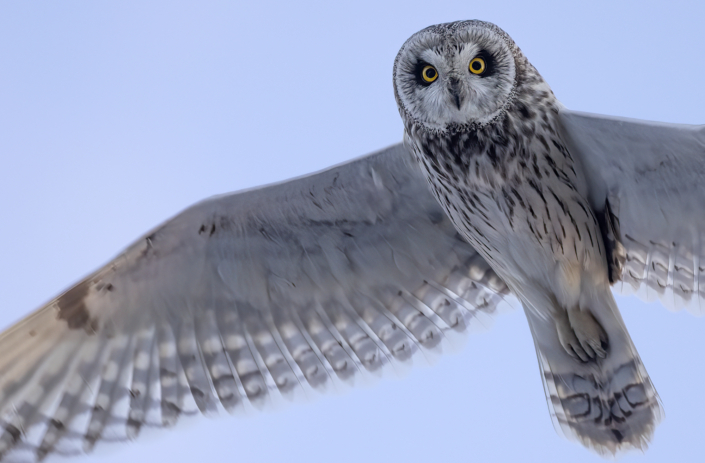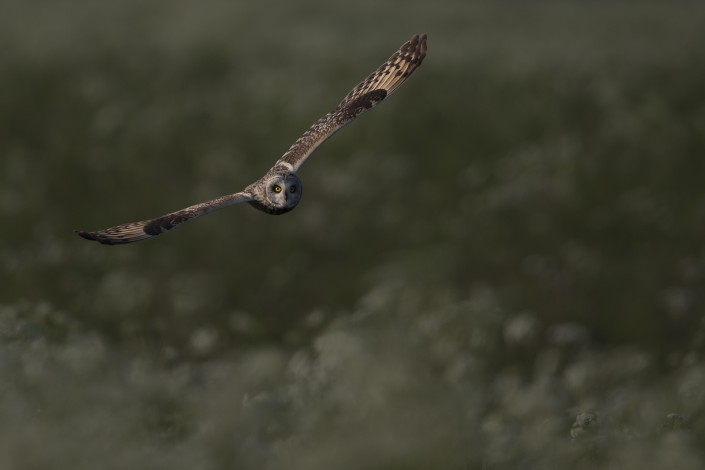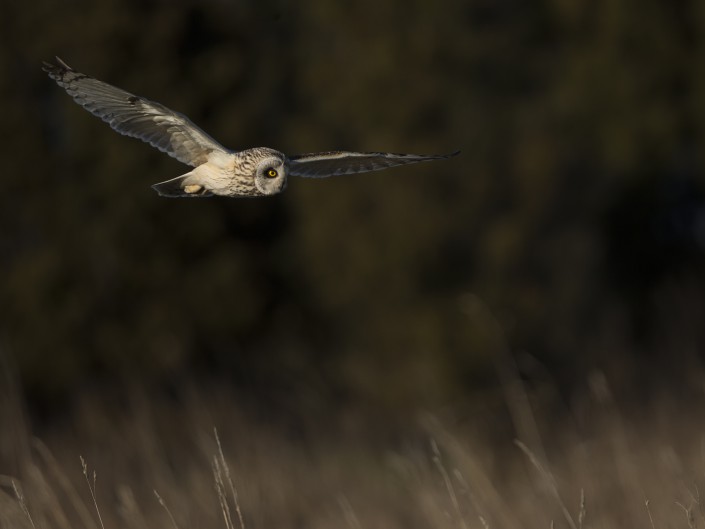This post is also available in: Swedish
Short-eared owl – Asio flammeus
Short-eared owl – Asio flammeus
is a species of typical owl (family Strigidae). Owls belonging to genus Asio are known as the eared owls, as they have tufts of feathers resembling mammalian ears. These “ear” tufts may or may not be visible. Asio flammeus will display its tufts when in a defensive pose. However, its very short tufts are usually not visible. The short-eared owl is found in open country and grasslands. The word flammeus is Latin for “flaming, or the color of fire”.[3] The yellow-orange eyes of A. flammeus are exaggerated by black rings encircling each eye, giving the appearance of them wearing mascara, and large, whitish disks of plumage surrounding the eyes like a mask. Over much of its range, short-eared owls occurs with the similar-looking long-eared owl. At rest, the ear-tufts of long-eared owl serve to easily distinguish the two (although long-eared owl can sometimes hold its ear-tufts flat). The iris-colour differs: yellow in short-eared, and orange in long-eared, and the black surrounding the eyes is vertical on long-eared, and horizontal on short-eared. Overall the short-eared tends to be a paler, sandier bird than the long-eared. There are a number of other ways in which the two species the differ which are best seen when they are flying: a) short-eared often has a broad white band along the rear edge of the wing, which is not shown by long-eared; b) on the upperwing, short-eared owls’ primary-patches are usually paler and more obvious; c) the band on the upper side of short-eared owl’s tail are usually bolder than those of long-eared; d) short-eared’s innermost secondaries are often dark-marked, contrasting with the rest of the underwing; e) the long-eared owl has streaking throughout its underparts whereas on short-eared the streaking ends at the breast; f) the dark markings on the underside of the tips of the longest primaries are bolder on short-eared owl; g) the upperparts are coarsely blotched, whereas on long-eared they are more finely marked. The short-eared owl also differs structurally from the long-eared, having longer, slimmer wings: the long-eared owl has wings shaped more like those of a tawny owl. The long-eared owl generally has different habitat preferences from the short-eared, most often being found concealed in areas with dense wooded thickets. The short-eared owl is often most regularly seen flying about in early morning or late day as it hunts over open habitats.
It sounds like this
Recording by Ryan P. O’Donnell from Xeno canto
































